A METHOD TO ASSESS FLUTTER STABILITY OF COMPLEX MODES
Andrea Arnone1, Francesco Poli1, and Claudia Schipani2
1 “Sergio Stecco” Department of Energy Engineering
University of Florence
Via S. Marta, 3 – 50139 Florence, ITALY
2Avio – R&D
Via Nizza, 312 -10127 Turin, ITALY
Abstract A method to quickly predict aeroelastic stability or instability of blade row com
plex vibration modes is described. The computational approach is based on a time-linearized Navier-Stokes aeroelastic solver, and a specifically developed program. Time is saved by doing a few fundamental solver computations and then superposing the solutions to analyze each complex mode.
Test results on two low pressure turbines are presented.
Keywords: Flutter screening, complex modes, preliminary design, time-linearized, aero-
elasticity
1. Introduction
Nowadays, important goals in the aero-engine design are weight and cost reduction, as well as reliability increase. These goals are reached by reducing the number of mechanical parts and by adopting thin and highly loaded blades. These trends increase the relevance of blade row vibration phenomena (flitter and forced response) that are recognized as a major cause of high cycle fatigue (HCF) failure in rotating as well as static components.
In recent years the attention of aero-engine industry has been focused on the development of advanced computational tools, that, combining CFD and structural dynamic analysis, —more or less accurately— model the fliid-structure interaction, and, in particular, enable the assessment of flitter stability [Marshall and Imregun, 1996]. However these tools are computationally very expensive and require detailed input data: thus their application is usually limited to the design validation phase, while they are not suitable for sensitivity and parameter studies, that are often needed during the preliminary design.
31
K. C. Hall et al. (eds.),
Unsteady Aerodynamics, Aeroacoustics and Aeroelasticity of Turbomachines, 31-40. © 2006 Springer. Printed in the Netherlands.
Less significant advances have been made for the development of design methods, that, adopting a simplified approach to the fliid-structure interaction modeling, but still relying on specifically developed computational tools, may be applied in the preliminary design, without loosing representativeness of the blade design under investigation.
The recent work by Panovsky and Kielb, proposing a design method to prevent LP turbine blade flitter [Panovsky and Kielb, 2000], is a well-known attempt in this direction. This method (P-K method) is based on the finding that flutter stability of a turbine blade vibration mode is not only depending on the mode frequency and blade aerodynamic operating condition, but also on the blade modeshape.
The flutter stability is still assessed by comparing the actual to critical reduced frequency, making the new method easily applicable. The critical reduced frequency, traditionally constant for a given mode typology (torsion or bending), is derived from the blade torsion axis location —or bending direction—, while the actual reduced frequency is computed through the traditional formula, based on mode frequency and blade aerodynamic operating condition: k = uc/(2vout), where и is the angular frequency, c is the chord and vout is the outlet flow velocity.
On the other side the proposed method is limited to real modes in traveling waves. Real modes are single harmonic component modes: all points belonging to the same blade vibrate in phase (or antiphase) with each other.
This hypothesis is acceptable for elastically suspended uncoupled blades, but essentially excludes blade row assembly modes to be properly described.
This is the case for shrouded rotor rows, where the blade mechanical coupling generates the so-called complex modes, that can be seen as a superposition of two real modes in quadrature.












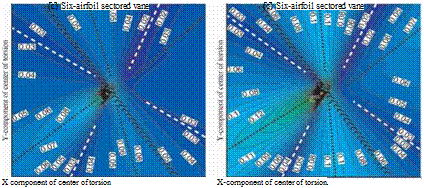
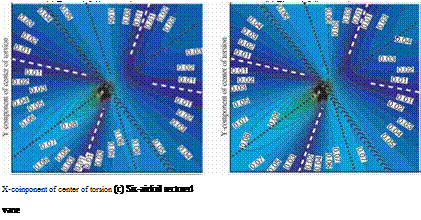
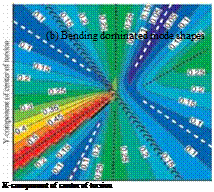
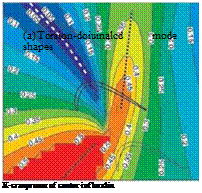
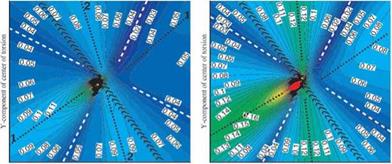


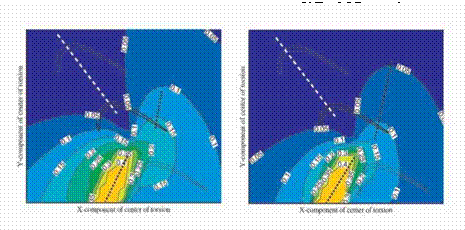
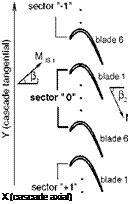 pitch/c = 0.89 stagger = 350
pitch/c = 0.89 stagger = 350


